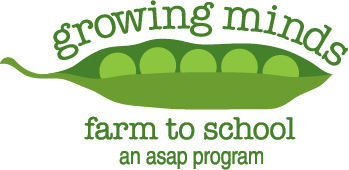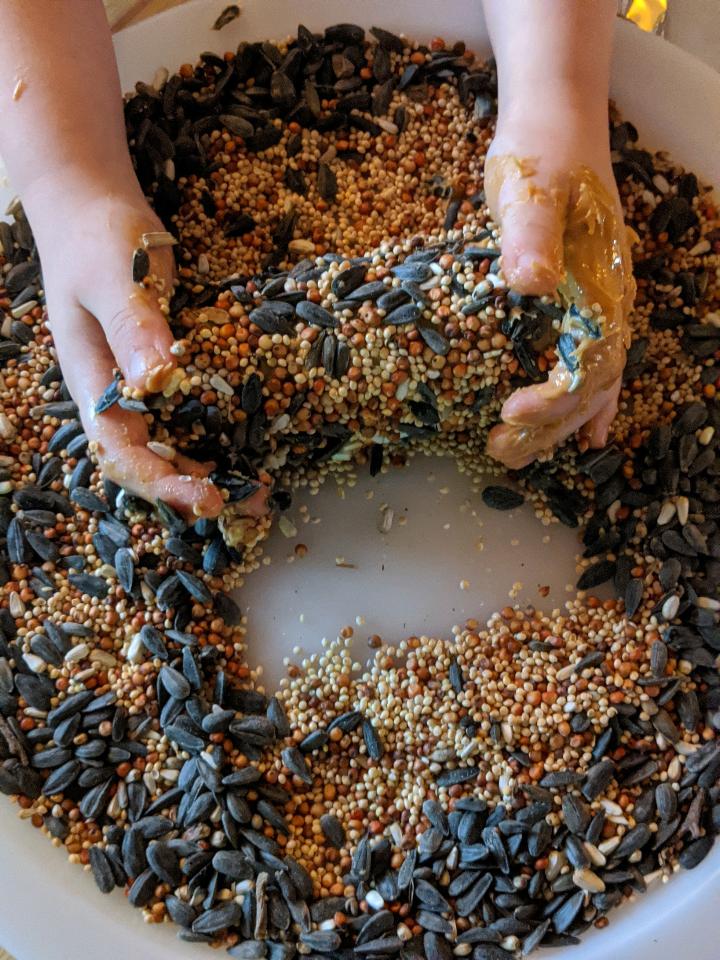This week’s theme is seeds. Our “Growing Minds Day by Day” educational resource lists are designed for families and educators.
Growing Minds Day by Day
Seeds
Books:
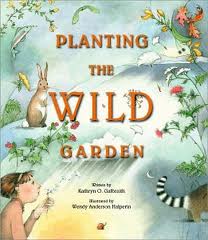 Planting the Wild Garden
Planting the Wild Garden
by Kathryn Galbraith
A farmer and her son carefully plant seeds in their garden. In the wild garden, many seeds are planted too, but not by farmers’ hands. Different kinds of animals transport seeds, often without knowing it. Sometimes rain washes seeds away to a new location. Watch a read aloud on YouTube and enjoy a fun activity after the story is read.
 The Seeds of Friendship
The Seeds of Friendship
By Michael Foreman
Adam feels alone in the strange new city. He misses his old friends and the colors of his faraway home. It’s fun to build snow animals with children in his new neighborhood, but Adam’s concrete surroundings still make him wish for something more. So when a teacher gives him a few seeds, it plants an idea in him—an idea that could transform his gray world forever. Watch a read aloud on YouTube.
Find more books
Both of the books above are available for Asheville-based educators to check out from our lending library. Visit the Growing Minds’ farm to school literature database to discover more of our favorite children’s books. Type “seeds” into the search bar to explore more of our favorite stories.
Local Food Recipe:
 Homemade Seed Bars
Homemade Seed Bars
Recipe and photo courtesy of Feasting at Home
Nut-free, oil-free, grain-free, paleo approved energy bars that only take 5 minutes of hands on time before baking in the oven. High in protein and fiber, these all natural bars make for a simple breakfast on the go or energy boosting midday snack!
Ingredients:
- 1/2 cup raw pumpkin seeds
- 1/2 cup raw sunflower seeds
- 1 heaping cup large flaked unsweetened coconut
- 1/4 cup sesame seeds
- 1/4 cup chia seeds
- 1/4 cup flax seeds (or sub hemp seeds)
- Generous pinch salt
- 1 teaspoon vanilla
- 1/2 cup honey
Directions:
- Preheat oven to 325 F.
- Mix the seeds and salt together in a medium bowl. Stir in vanilla and warm honey, until uniformly combined.
- Place a piece of parchment in an 8 x 8 baking pan (all the way up the sides too). Spray lightly with oil.
- Pour seed mix into lightly greased, parchment-lined pan and using a wet metal spatula, spread it out, into corners and edges and press down firmly until you have a compacted, smooth surface at a uniform depth.
- Place on the middle rack in the oven for 40-55 minutes. Check at 25 minutes adjusting heat down to 300 F, if edges seem too brown.
- For a chewy consistency, take out at 40-45 minutes, for a crispier crunchy consistency, let it cook the full 50-55 minutes. Keep in mind, all ovens are different, so heat may vary. The key is….You want to take them out when they are perfectly golden, before they get too dark. So keep a close eye on them after 40 minutes. If you take them out too early (before they are golden) they may be too chewy and sticky. Pay attention to the color.
- Remove from the oven, and cool completely. You could place it in the fridge to cool faster. When it’s completely cooled, take the parchment out of the pan, turn it over and remove parchment. Flip back over and cut into desired shapes or bars. Store at room temp.
Educational Resources:
 Growing Minds Lesson Plans
Growing Minds Lesson Plans
- Seed Exploration (preschool): Children learn about seeds through hands-on activities, inquiry, and seed exploration.
- What Plants Need (preschool): Children will become familiar with the different things plants need to survive and grow. Children will learn to listen and participate in a group activity while outdoors in the garden through this movement based activity.
- Pumpkin Exploration (preschool): Introduce children to pumpkins and how they grow. Use a pumpkin seed activity to practice sorting and counting in 2s, 5s, and 10s.
- Seed Tapes (K-2): Students will learn proper spacing for planting in the garden.
- Seed Starting (K-2): Students will observe germination of different types of seeds and learn how to transplant seedlings into soil.
Other Resources:
- ASAP Growing Local Radio Episode: Saving Seeds and Sustaining Cherokee Traditions at Long Family Farm
- Seed Starting Tip Sheet
- Seeds We Eat lesson plan (Source: The Edible Schoolyard Project)
- Gardening Basics – When to Plant Seeds (Source: KidsGardening.org)
- Seed Song – How Seeds Move – Seed Dispersal (Source: Mr. R’s Songs for Teaching, YouTube)
Activities:

Homemade Bird Feeder
Kids can make a homemade bird feeder, then watch to see who shows up to enjoy the feast. To make a simple bird feeder at home, you will need the following supplies:
- Empty toilet paper or paper towel tube
- Peanut butter
- Bird seed
- String
First, spread a thin layer or peanut butter all over your paper tube. Next, roll the tube in the birdseed to cover. Thread a string through the paper tube and tie the ends together, leaving enough string for a loop to hang the feeder. Hang your feeder outside on a tree branch and enjoy watching the birds visit the birdseed buffet!
Seed Balls
Winter is a great time to make seed balls to plant in the late winter or early spring. You could even give them to friends and family for holiday gifts! Use three parts clay to one part potting soil or compost. Ask children to pick a seed of their choice to add into the mixture. Milkweed, wildflower, and sunflower seeds work well. (Milkweed attracts butterflies and is the only plant that Monarchs lay their eggs on). These seed balls do not need watering or to be broken apart; they just need to be thrown in the yard somewhere sunny. Visit NASA’s Climate Kids website to find more tips for making seed balls.
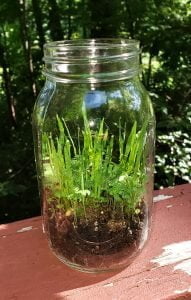 Make a Mini-Garden
Make a Mini-Garden
Help your child learn about sprouting seeds by making a mini-garden in a glass jar. Buy some wheat grass or grass seed from a local hardware or garden supply store. Soak the seeds in a small amount of water overnight. Fill the bottom of a glass jar with damp potting soil. Place the seeds on top and lightly water. The seeds will sprout rapidly and the children will be able to observe the roots growing down into the soil and the plant pushing up toward the light.
Your children might enjoy placing small plastic or ceramic figurines inside the jar to make their mini-garden more whimsical. Animals, dinosaurs, mushrooms, or fairies all make great additions to a mini-garden.
Beanie Babies
Make “Beanie Babies”: Use a small ziploc bag, add a cotton make-up pad or large cotton ball (or a wet paper towel), a bean seed, and a few drops of water. Put on a string and have students wear them around their neck. Talk about how body heat helps with seed germination.
Seed Exploration:
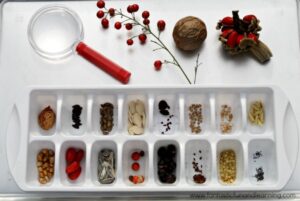 Are all seeds the same? The sometimes pesky seeds that you remove and throw away from various fruits and vegetables could make a fun and free activity for your kids. Have children brainstorm a list of foods people eat that come from seeds–there are hundreds of types, including almonds, walnuts, beans, peas, wheat, corn, coconut, sesame seeds, sunflower, and pumpkin seeds. Do your kids have a favorite seed to eat? How many edible seeds can you find in your kitchen?
Are all seeds the same? The sometimes pesky seeds that you remove and throw away from various fruits and vegetables could make a fun and free activity for your kids. Have children brainstorm a list of foods people eat that come from seeds–there are hundreds of types, including almonds, walnuts, beans, peas, wheat, corn, coconut, sesame seeds, sunflower, and pumpkin seeds. Do your kids have a favorite seed to eat? How many edible seeds can you find in your kitchen?
Spend a few days collecting seeds from outside (pine cones, acorns), everything bagels (poppy, sesame), and fruits and vegetables such as pumpkin, squash, apples, green peppers, tomatoes, lemons, or avocados. Once you have a good amount of seeds collected, sort them into different containers or into the compartments of an ice tray. Spend time with your kids investigating the seeds. Examine them through a magnifying glass, feel whether they are hard or squishy, crack open the big ones, and have children guess what food or plant it came from. Do research together on how each grows from seed to plant, and then how it becomes food on the table.
Bake pumpkin seeds or buy a pack of sunflower seeds for a healthy snack during the activity. This investigation will extend their excitement for growing food throughout the long and dark winter months.
—
That’s it for this week. Check back next week for new resources. Click here to access Day by Day resources from past weeks. If you didn’t find what you’re looking for here, please visit our Lesson Plans page.
